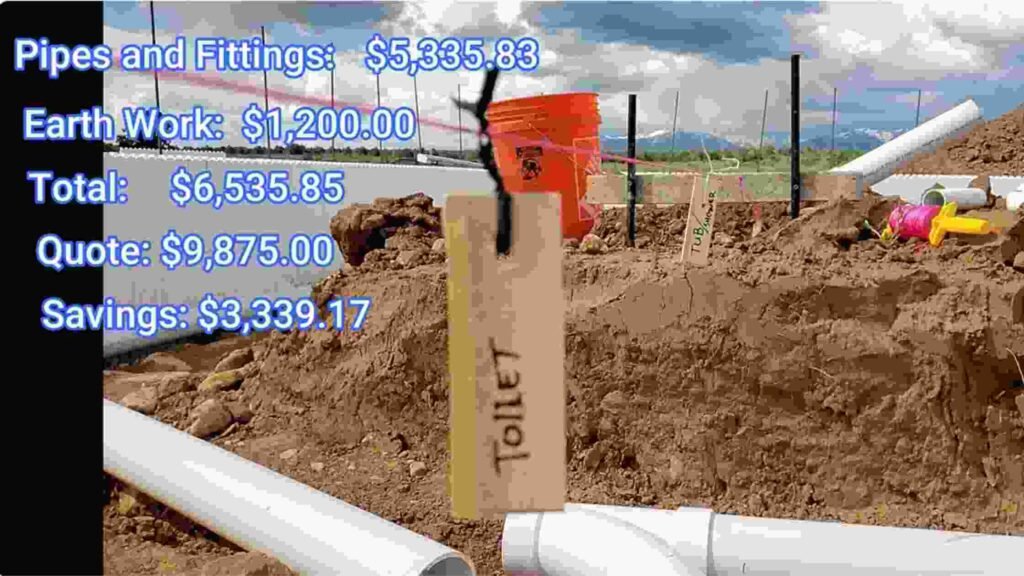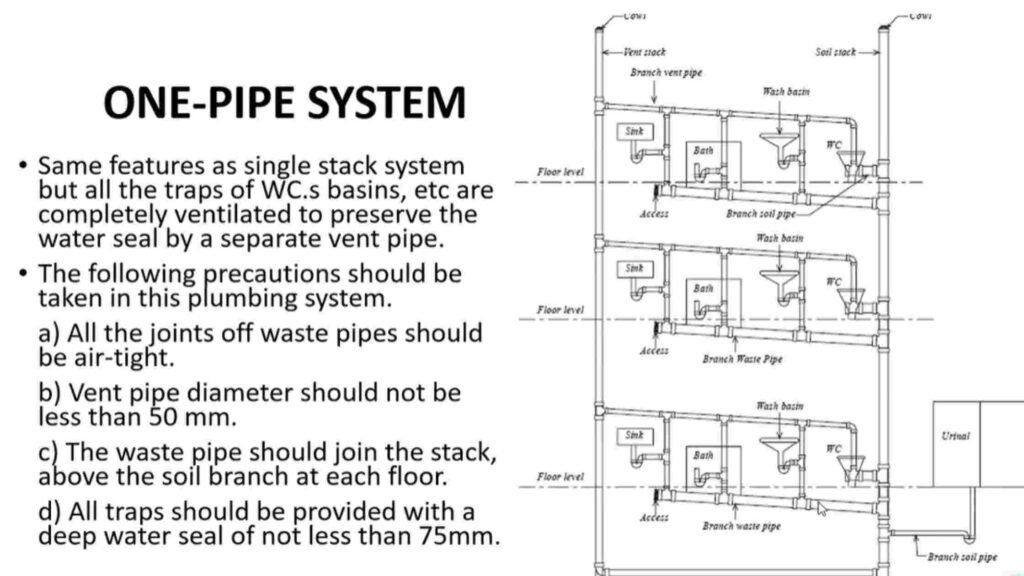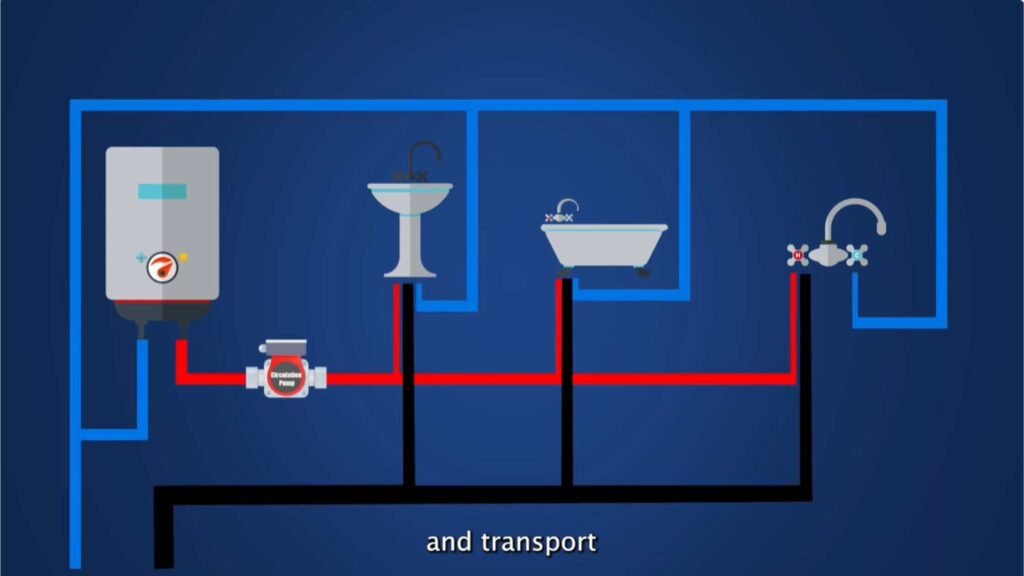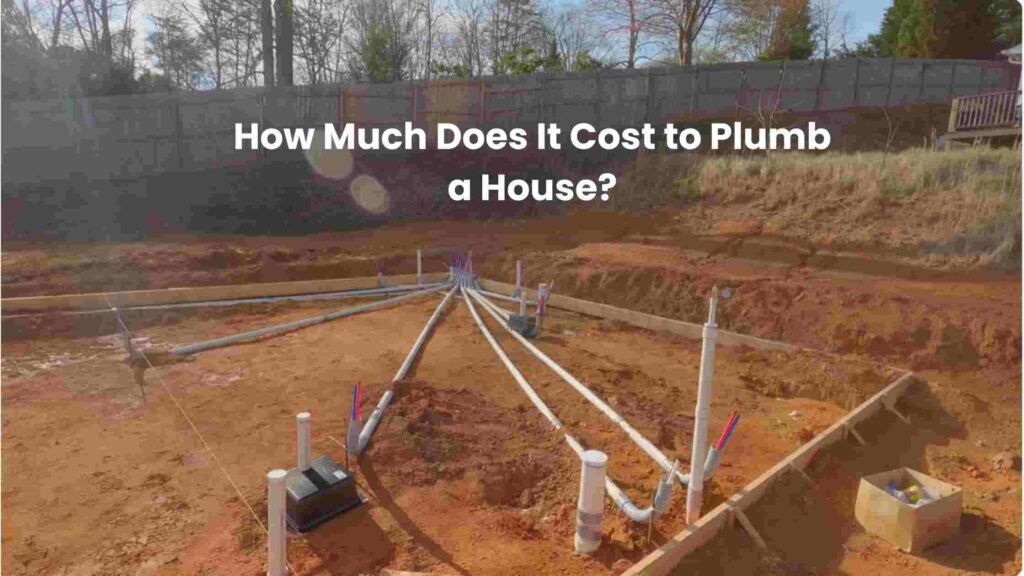The Cost to Plumb a House ranges between $2,000 and $15,000. The exact price varies based on size, materials, and labor.
Plumbing a house is an essential and complex component of any residential construction or renovation project. It represents a significant part of the overall budget, with costs influenced by various factors like the home’s square footage, the number of bathrooms and fixtures, and the choice between standard or high-end materials.
The plumbing process involves installing a network of pipes, fixtures, and other hardware necessary for clean water delivery and waste removal. Contractors and homeowners must navigate local building codes, select appropriate piping materials, and design an efficient system to ensure a functional, sustainable, and safe plumbing infrastructure.
Understanding these cost factors is crucial for setting a realistic budget and finding the right professionals to execute the installation or updates to a home’s plumbing system.
Introduction To Plumbing Costs

Starting on a journey to plumb a new house is exciting. It’s an essential step in creating a safe and functional home. Understanding the varied elements contributing to the overall plumbing costs is crucial. A clear budget will help you avoid surprise expenses. Let’s dive into what shapes these costs.
The Importance Of Accurate Budgeting
Setting a precise budget for plumbing is necessary. It ensures that your project stays on track. A clear budget will help manage expenses effectively. It also helps in securing the necessary funds. This guarantees that each phase of your plumbing project is successful.
Factors Influencing Plumbing Expenses
The total cost for your house’s plumbing can vary widely. Here are some of the factors:
- House size: More square footage usually means higher costs.
- Complexity of layout: More rooms mean more work, which means more money.
- Plumbing materials selected: Choices range from basic to high-end, affecting the price.
- Regional labor rates: Costs can change depending on where you live.
- Permits and codes: Meeting local regulations may impact your budget.
Accurate budgeting and understanding these factors are critical. They help in making smart financial choices. They will make your plumbing project a success.
Types Of Plumbing Systems

Understanding the types of plumbing systems is crucial when looking into the cost of plumbing a house. Various elements influence the total expenses. These include pipe materials and the choice between traditional or modern plumbing technologies.
Materials And Their Costs
Different materials come with unique price tags.
- Copper: Durable, but pricey.
- PVC: Light and cost-effective.
- PEX: Flexible and moderately priced.
The choice of materials will impact your overall budget.
| Material | Cost per Foot |
|---|---|
| Copper | $2 – $4 |
| PVC | $0.50 – $1 |
| PEX | $0.50 – $2 |
Keep in mind, your project size will determine the total cost.
Traditional Vs. Modern Systems
Traditional plumbing relies on sturdy materials like metal pipes. It’s robust but often more expensive. Modern systems favor materials like PEX. These systems are easier to install and typically less costly.
| System Type | Installation Complexity | Estimated Cost |
|---|---|---|
| Traditional | High | $5,000 – $10,000+ |
| Modern | Low | $1,500 – $5,000 |
Choosing between the two comes down to personal preferences and budget.
Average Costs For New Plumbing
Thinking about the average costs for new plumbing can be overwhelming. The price to plumb a house varies widely. Knowing average pricing helps homeowners budget. The next sections break down the costs by house size and per fixture.
Pricing By House Size
House size significantly impacts plumbing costs. A smaller home requires fewer materials and labor. Larger homes need more pipes and installations. The table below outlines average pricing by house size.
| House Size | Average Cost |
|---|---|
| 1,500 sq. ft. | $4,000 – $8,000 |
| 2,500 sq. ft. | $8,000 – $12,000 |
| 3,500+ sq. ft. | $12,000 – $20,000+ |
Per Fixture Installation Rates
Installers often charge per fixture. This includes sinks, toilets, and showers. Different fixtures cost different amounts to install. Below is a common list of fixture rates.
- Sink: $150 – $250
- Toilet: $130 – $250
- Bathtub: $450 – $600
- Shower: $450 – $2,000
Note: Prices depend on fixture type and installation complexity. High-end fixtures cost more to install.
House Renovation Plumbing Costs
Thinking about renovating your home? Plumbing costs can surprise you. It’s vital to budget correctly for a successful renovation. Let’s dive into what you might spend on plumbing when updating your home.
Upgrading Existing Systems
Modern comforts require an updated plumbing system. An upgrade might include:
- New fixtures like sinks, toilets, and showers.
- Improved piping materials such as PEX or copper.
- Water-saving technology for a greener home.
Upgrades vary in cost due to factors like material quality and house size. An average upgrade can range from $2,000 to $15,000.
Dealing With Old Pipework
Old pipes pose a challenge. They often require:
- Complete replacement to meet modern standards.
- Inspection to spot any hidden issues.
- Removal of hazardous materials, like lead or asbestos.
Replacing old pipework adds to costs. Total expenses can range from $5,000 to over $20,000. This depends on the extent of work and house structure.
Labor Expenses
The cost of plumbing a house involves various elements. Labor expenses often form a substantial part of the overall budget. Professional plumbers command different rates, influenced by factors such as expertise, task complexity, and regional living costs. Understanding these expenses is crucial for budgeting your plumbing project accurately.
Professional Plumber Rates
The rates for professional plumbers can vary widely. Typically, plumbers charge either by the hour or a flat fee for specific jobs. Hourly rates ensure you pay for the work time, whereas fixed rates relate to the job’s nature. Expect hourly rates to range from $45 to $150.
Certified master plumbers may charge more, reflecting their higher skill level. These experts tackle complex issues that general plumbers might not manage. For entire house plumbing, costs could escalate, needing more hours or several plumbers to finish the task.
Cost Differences By Region
Where you live plays a vital role in labor costs. Different regions have varying living costs and demand for services, which influence the rates plumbers charge. The table below shows how labor expenses vary across diverse locations:
| Region | Average Hourly Rate |
|---|---|
| Midwest | $45 – $75 |
| South | $50 – $100 |
| West | $60 – $150 |
| East Coast | $70 – $150 |
Dense urban areas tend to have higher rates compared to rural locales. For accurate estimates, consult local plumbers and get multiple quotes to find the best deal for your project.
Additional Plumbing Cost Factors

Understanding the full cost of plumbing a house means looking beyond the basics. Several factors can affect the final price tag. We should consider things like permitting and the chance of running into unexpected issues. Let’s delve deeper into these costs.
Permitting And Inspection Fees
Every plumbing project needs the green light from local authorities. Permits ensure the work meets safety standards. The cost can vary based on location and project size. Here’s a breakdown:
- Local Regulations: Each area has its own rules which can affect the fee.
- Scope of Plumbing Work: Larger projects often need more permits.
These fees might seem small compared to the overall cost. Yet, they are crucial for lawful and safe plumbing. Inspections follow permits, adding to the cost. Inspectors check the job’s done right, keeping your home safe.
Unexpected Complications
Sometimes, a plumbing job can reveal surprises. Issues like old pipes or hidden damage matter. These complications can raise your costs:
| Complication | Additional Cost |
|---|---|
| Replacing Old Pipes | Varies with materials and labor |
| Repairing Hidden Damage | Depends on damage extent |
Professionals might find these issues during the work. Addressing them quickly is important to prevent future problems. It keeps your home’s plumbing system strong and efficient. Always plan for extra costs, just in case.
Saving Money On Plumbing
Plumbing a house is a big job. It can cost a lot. But, there are ways to save money while making sure your pipes are top-notch.
Diy Vs Professional Plumbing
You might think doing it yourself will save you money. Sometimes it does. But you need the right skills.
- Simple tasks like changing a tap are doable.
- Mistakes can be costly. Bad plumbing leads to leaks.
- Pros know the codes. They get it right the first time.
Comparing costs is smart. Think about your skill level. Sometimes, hiring a pro is the better deal.
Choosing Cost-effective Materials
Materials matter. Yet, a high price does not always mean better quality.
| Material | Pros | Cons | Cost |
|---|---|---|---|
| Copper | Durable, reliable | Expensive, requires skills | High |
| PVC/PEX | Cheaper, flexible | Not for all uses | Low |
Choose materials based on need and budget. Mixing materials might be your best bet.
Planning Your Plumbing Budget
When you dive into the world of home construction, plumbing emerges as a crucial element. The right budget plan is critical. It ensures smooth sailing through the financial aspects of plumbing a house. Let’s guide you in planning your plumbing budget efficiently.
Creating A Cost Breakdown
To start, detail all expenses associated with plumbing. This includes materials, labor, and permits. A thorough cost breakdown helps avoid surprises. Here is how to create one:
- Research materials: Know the types and quantities needed.
- Estimate labor hours: Labor costs can vary widely.
- Permits: Check local requirements and fees.
A table simplifies the process:
| Item | Estimated Cost |
|---|---|
| Pipes and Fittings | $X, XXX |
| Labor | $XX, XXX |
| Permits | $XXX |
| Total | $XX, XXX |
Remember, prices can differ by location and time.
Allocating Funds For Contingencies
Unexpected costs can pop up during plumbing projects. Be ready with a safety net. Consider the following advice:
- Set aside 10-15% of your total budget for contingencies.
- Use this fund for unforeseen complications or price changes.
This approach reduces stress and keeps your project on track.
Conclusion: Investing In Quality Plumbing
Welcome to the final part of our discussion on plumbing costs for your home: Investing in quality plumbing is about more than just avoiding leaks. It is about peace of mind and long-term savings.
Long-term Benefits Of Proper Plumbing Investment
- Durability: Quality materials last longer, reducing the need for frequent repairs or replacements.
- Efficiency: Advanced plumbing systems can save on water and energy bills.
- Home Value: A well-plumbed house can significantly increase property value.
- Safety: Less risk of water damage and mold growth means a healthier living environment.
Summary Of Key Cost Considerations
Understanding the costs involved ensures smart budgeting for plumbing projects.
| Factor | Impact on Cost |
|---|---|
| Materials | Higher-quality materials tend to be more expensive but offer longevity. |
| Labor | Skilled plumbers may charge more but provide expert services. |
| Size of House | Larger homes require more materials and time, increasing overall costs. |
| Complexity | Complex designs need more effort and expertise to implement correctly. |
| Location | Costs can vary by region due to different labor rates and material availability. |
Remember, initial costs can be deceiving. Investing in quality plumbing services and materials pays off.
Frequently Asked Questions How Much Does It Cost to Plumb a House?
How Much Does It Cost To Run A Water Line 500 Feet?
The cost to run a water line 500 feet varies, typically ranging from $1,500 to $12,000. Variables include material, terrain, and labor rates.
How Much Is A Plumber In Austin?
Plumbers in Austin typically charge between $70 to $150 per hour. Rates can vary based on job complexity and plumber expertise.
Is It Worth It To Replumb A House?
Replumbing a house is often worth it, as it prevents costly leaks and water damage. It also ensures efficient water flow and can increase property value. Consider replacing old, corroded pipes to maintain a safe, functional home.
How To Quote New Construction Plumbing?
To quote new construction plumbing, assess the project scope, calculate material and labor costs, including permit fees, and consider potential challenges. Lastly, add a profit margin before finalizing your quote.
Conclusion
Estimating plumbing expenses is essential for any new home project. A varied price range reflects materials, labor, and complexity. Always consider local rates, potential unforeseen costs, and quality tradespeople. Investing wisely in plumbing can save money long-term, ensuring a well-functioning household for years.


